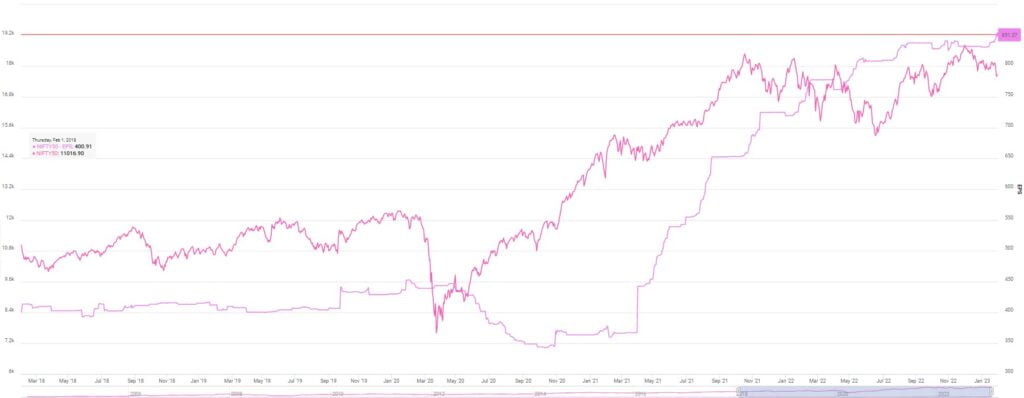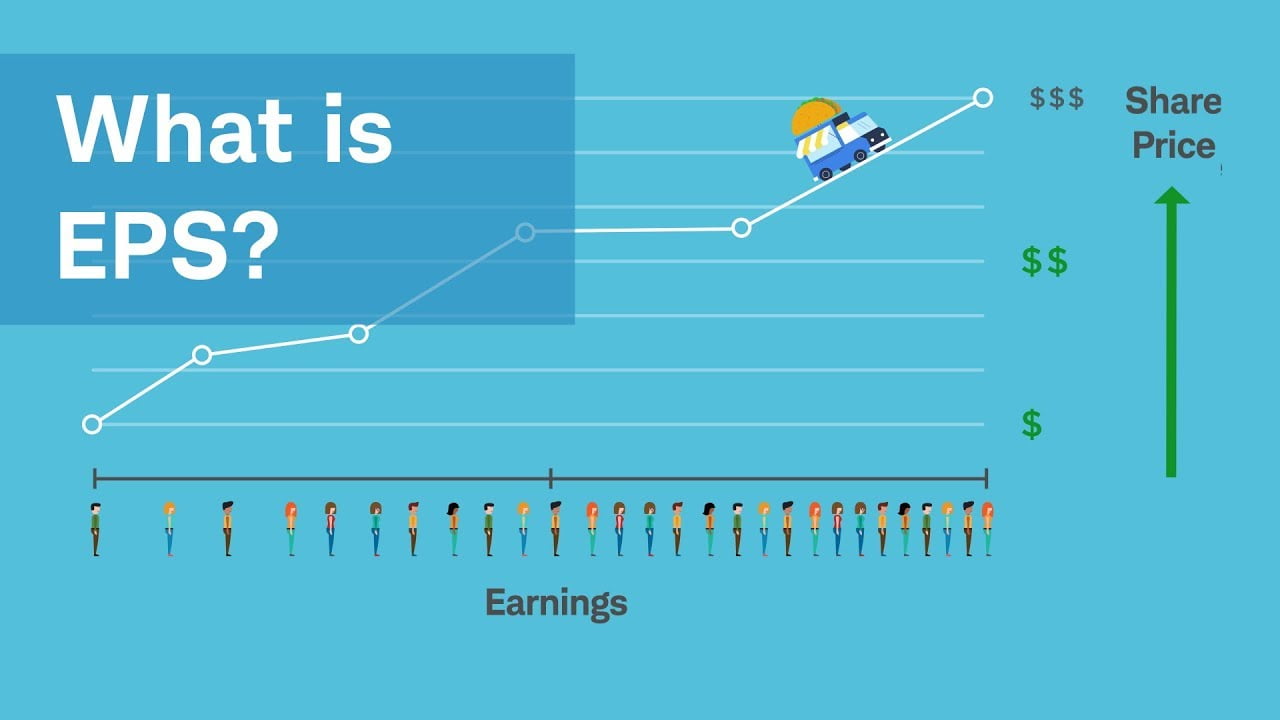EPS, or “Earnings per Share,” is a measure of a company’s profit per share of stock. So, if a company has an EPS of 2 Rupees and you own 100 shares of that company, you would earn 200 Rupees (2 x 100) if the company distributed all its earnings as dividends. It helps investors determine if a company is profitable and if it’s a good investment opportunity.
Hence Earning Par share (EPS) can be Calculated using Formula by Net profit of a company Divided Total Number shares in market.
Factors Required To find Earning per share
- Net profit of company – (For the period for which you want to find EPS)
- Total Number of outstanding shares.
Concept of Earning per share (EPS) in stock Market
- Profitability: EPS indicates how much profit a company generates per share of stock. It helps investors determine if a company is profitable and if it is generating enough revenue to support its operations and growth.
- Growth Potential: A company with a growing EPS is often seen as a good investment opportunity, as it signals that the company is expanding its business and generating more revenue.
- Valuation: Investors use EPS to value a company and compare it with other companies in the same industry. If a company’s EPS is higher than its peers, it may be a more attractive investment opportunity.
- Dividends: A company’s EPS also affects the amount of dividends it can pay to its shareholders. If a company has a higher EPS, it may be able to pay more dividends to its shareholders.
- To arrive at PE ratio To find out if stock of the company trading in share market is Overvalued or Undervalued. To what is Good Pe ratio for investing in the stock EPS is Required.

Following is chart of Nifty-50 Stocks Vs Earning per share From March 2018 To January 2023. You can Study the chart and consider what average EPS of Market. you can compare individual stock eps against market Eps to arrive at performance of stock. Investing in Nifty -50 Stocks is also good option to Consider to get equal returns as that of Average market returns.
Two Ways to calculate EPS in Stock Market
Basic EPS and Diluted EPS are two ways of calculating a company’s earnings per share (EPS).
- Basic EPS is calculated by dividing a company’s net income by its outstanding shares of common stock. This calculation assumes that all of the company’s convertible securities, such as convertible bonds and stock options, have been converted into common stock.
Here is an example of how Basic EPS is calculated:
Let’s say a company has net income of 100 million Rupees and has 10 million outstanding shares of common stock. The Basic EPS would be calculated as follows:
Basic EPS = Net Income ÷ Outstanding Shares of Common Stock = 100 million Rupees ÷ 10 million shares = 10 Rupees per share
- Diluted EPS, on the other hand, takes into account the potential dilution of a company’s earnings per share if all its convertible securities were converted into common stock. This calculation gives a more realistic view of a company’s earnings per share, as it assumes that all convertible securities will be converted and therefore increases the number of outstanding shares.
Here is an example of how Diluted EPS is calculated:
Let’s say a company has net income of 100 million Rupees, 10 million outstanding shares of common stock, and 1 million stock options outstanding. The Diluted EPS would be calculated as follows:
Diluted EPS = Net Income ÷ (Outstanding Shares of Common Stock + Outstanding Stock Options) = 100 million Rupees ÷ (10 million shares + 1 million options) = 9 Rupees per share
Basic EPS Vs Diluted EPS
Basic EPS is used when a more optimistic view of a company’s earnings per share is desired. It is calculated by dividing a company’s net income by its outstanding shares of common stock and assumes that all convertible securities, such as convertible bonds and stock options, have been converted into common stock. Basic EPS is useful in financial analysis and planning, as well as stock valuation, where a simplified view of a company’s earnings per share is desired.
Diluted EPS, on the other hand, is used when a more realistic view of a company’s earnings per share is desired. It takes into account the potential dilution of a company’s earnings per share from outstanding convertible securities, such as stock options and convertible bonds. Diluted EPS is useful for investment analysis, as it provides a more comprehensive view of a company’s earning potential and allows for comparison with other companies in the same industry. It is also useful for financial planning, where a more accurate picture of the company’s earnings is desired.
In summary, Basic EPS is used when a simplified view of a company’s earnings per share is desired, while Diluted EPS is used when a more comprehensive and realistic view is desired.
How to use EPS in Stock Market
Earnings per share (EPS) is an important financial metric used in the stock market to evaluate the profitability of a company. Here are some ways to use EPS in stock market analysis:
- Stock Valuation: EPS is used as a key component of various stock valuation models, such as the P/E ratio (price-to-earnings ratio), which is the ratio of a company’s stock price to its earnings per share. A high P/E ratio may indicate that a stock is overvalued, while a low P/E ratio may indicate that a stock is undervalued.
- Investment Analysis: EPS can be used to compare a company’s profitability with other companies in the same industry. A higher EPS typically indicates a more profitable company, making it a potential target for investment.
- Earnings Growth: EPS can also be used to track a company’s earnings growth over time. If a company’s EPS consistently increases, it can be an indication of healthy financial performance and potential for future growth.
- Forecast Accuracy: EPS can also be used to evaluate a company’s accuracy in forecasting its earnings. If a company consistently misses its earnings targets, it may indicate a lack of financial stability and potential risk for investors.
In conclusion, Earnings per share (EPS) is a widely used financial metric that provides insight into a company’s profitability. It is calculated by dividing a company’s net income by its outstanding shares of common stock and is used in various ways in stock market analysis, including stock valuation, investment analysis, earnings growth evaluation, and forecast accuracy assessment. When used in conjunction with other financial metrics, EPS can provide valuable information for making informed investment decisions.














